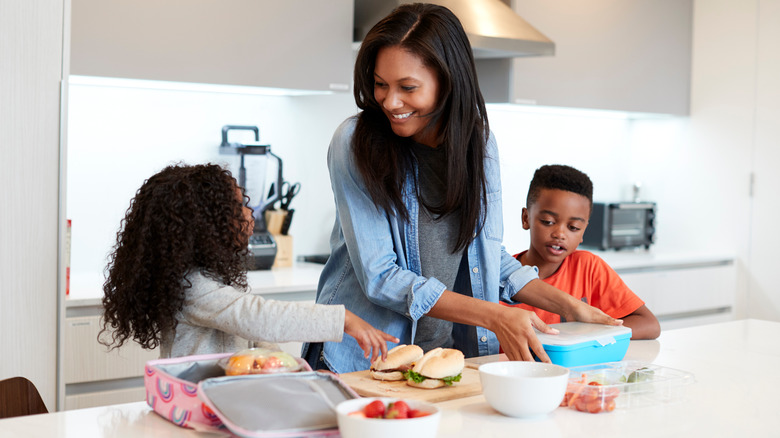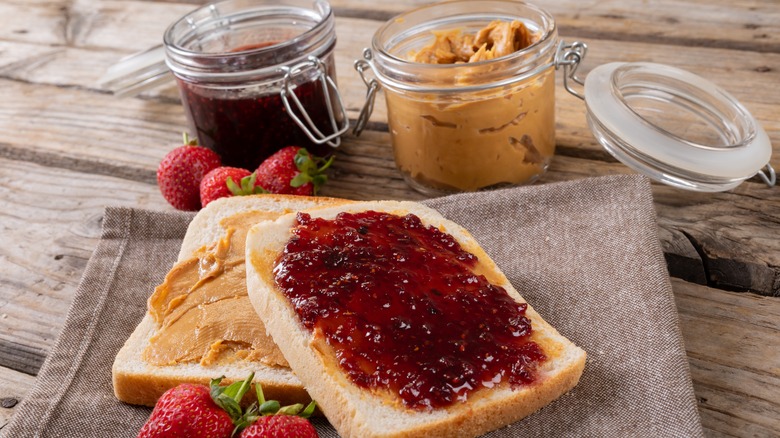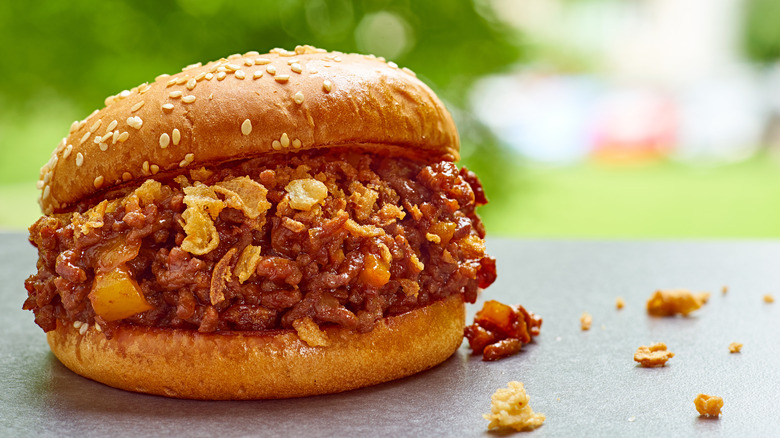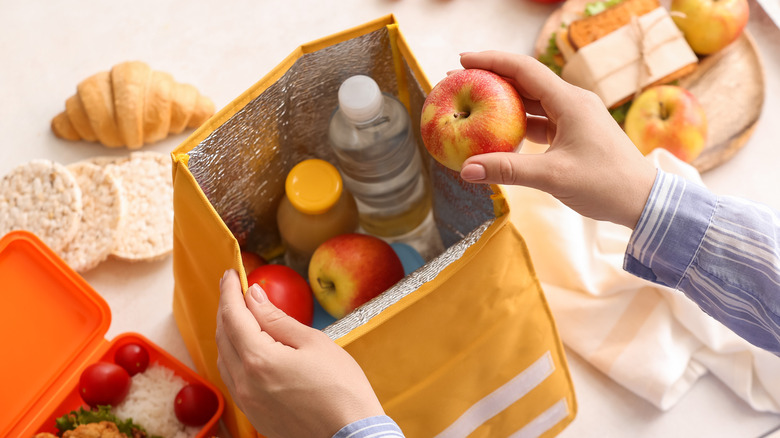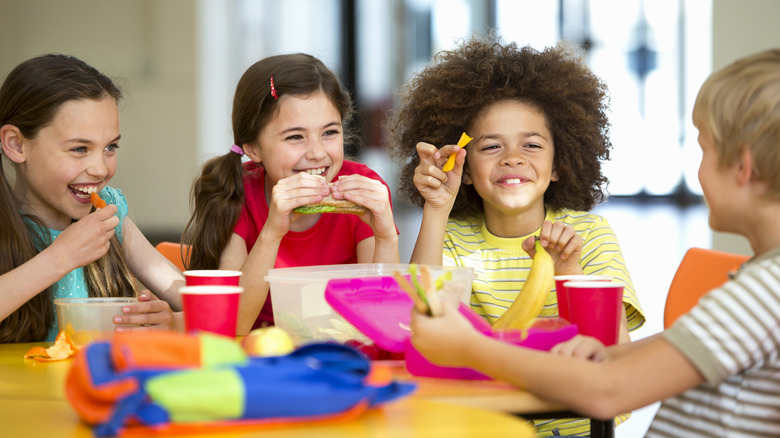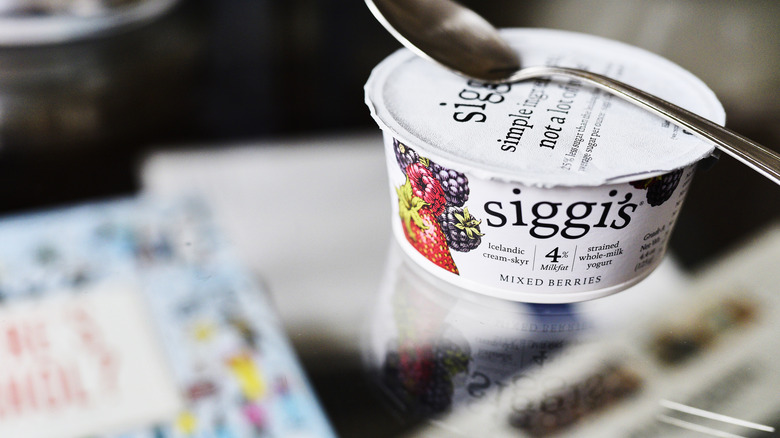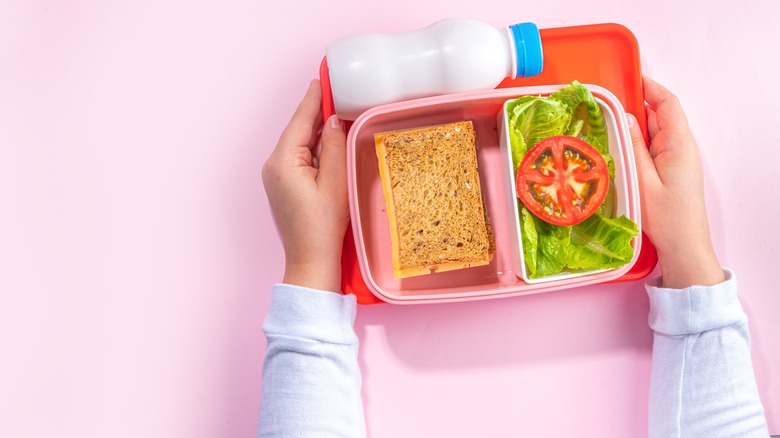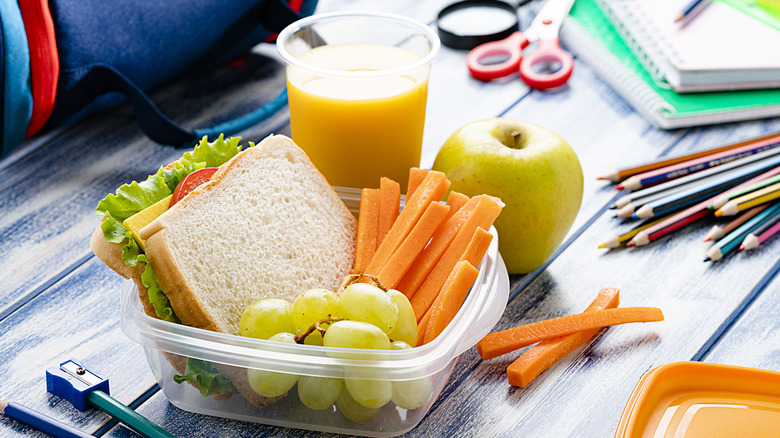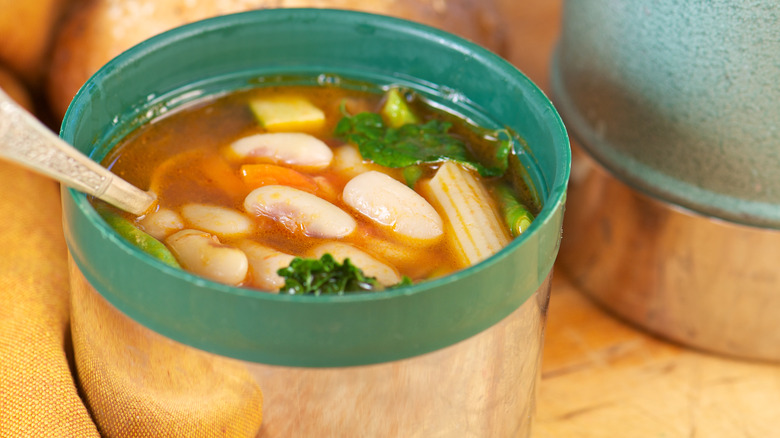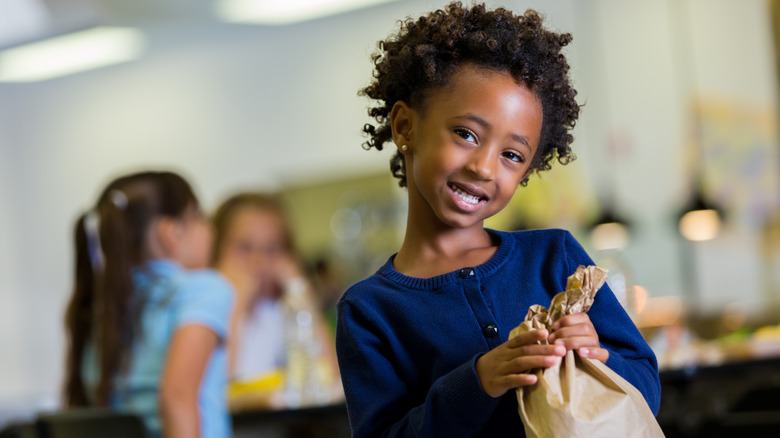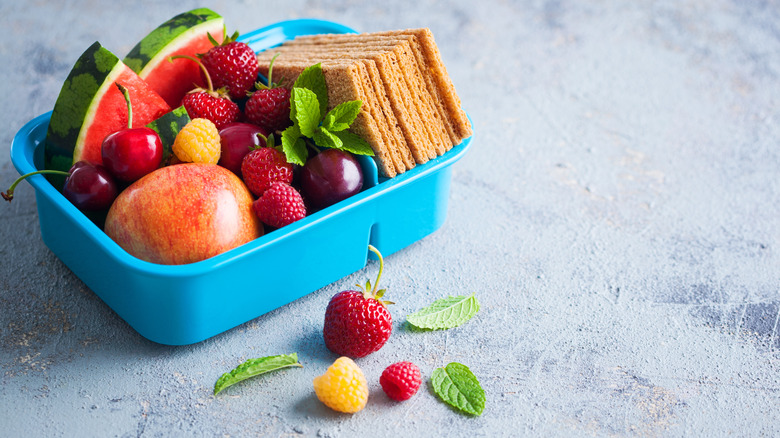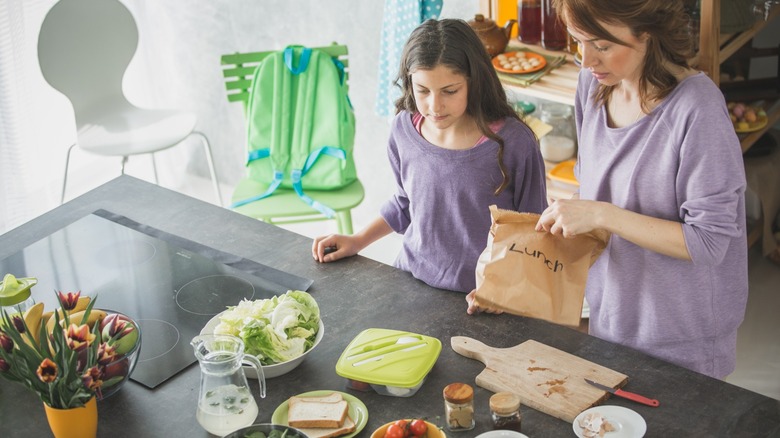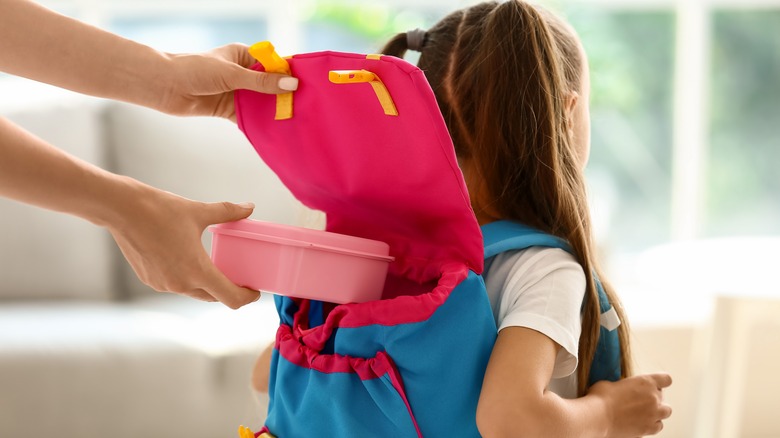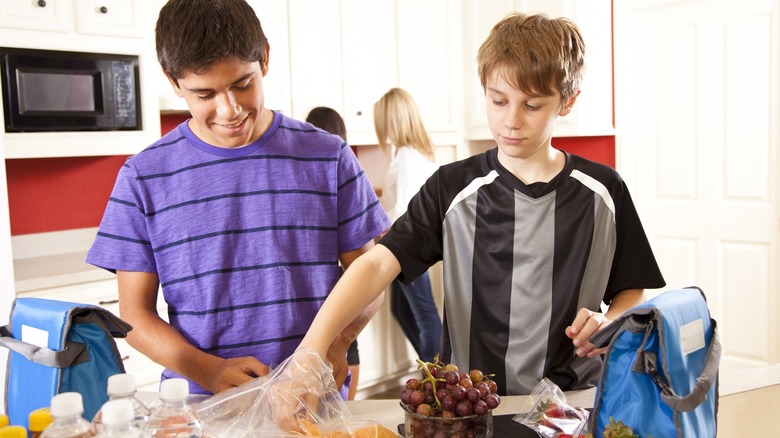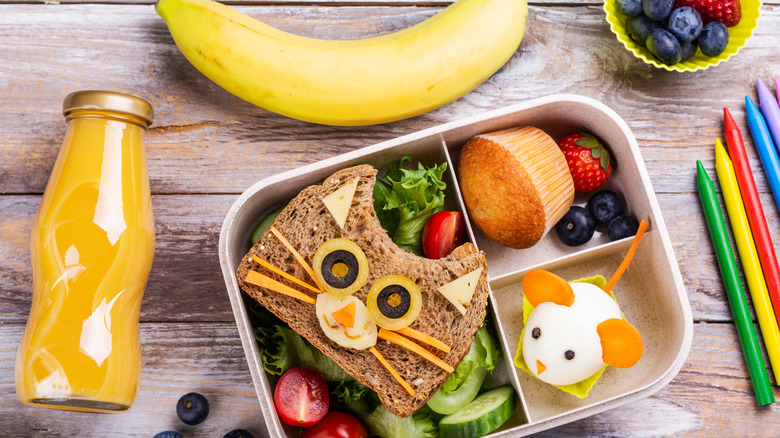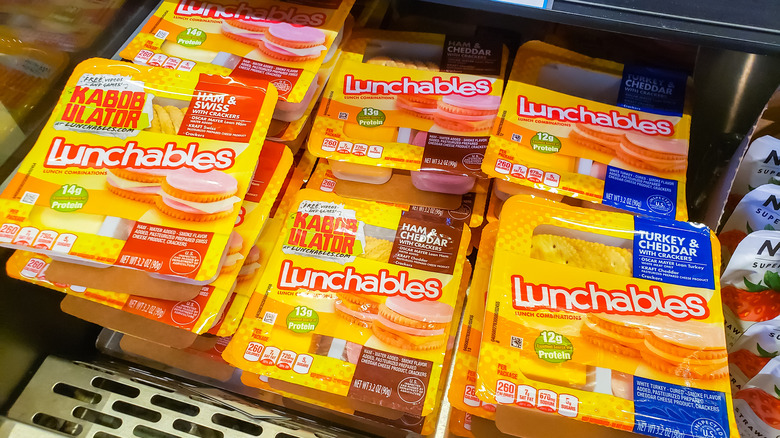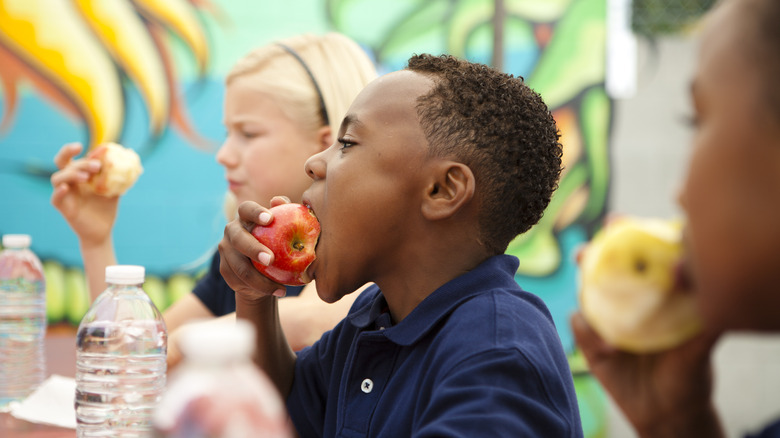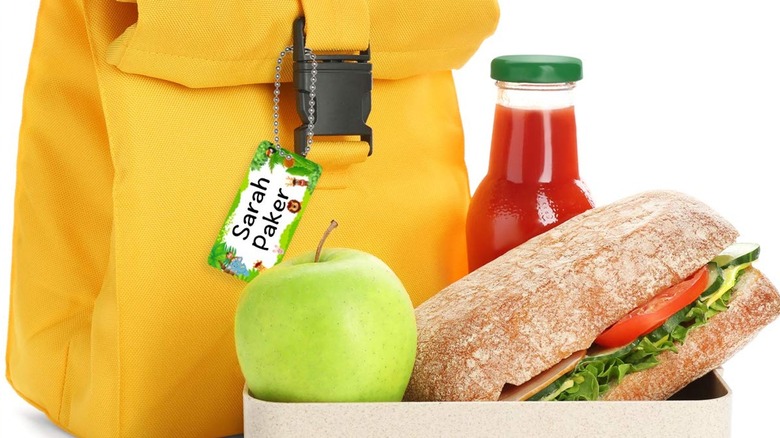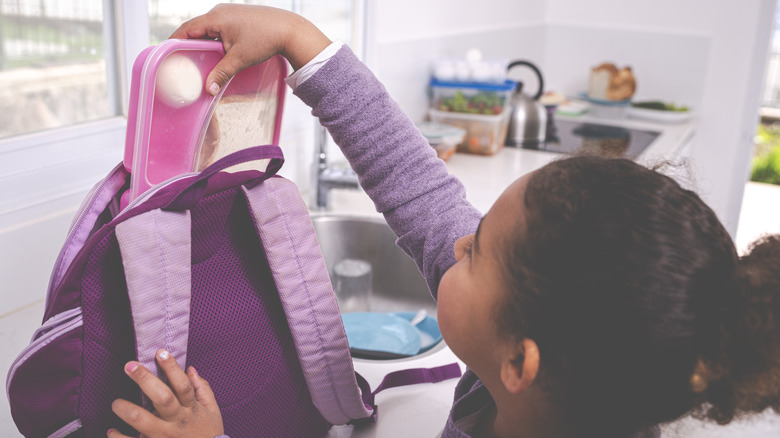18 Mistakes You Should Avoid When Packing School Lunches
Packing a school lunch for your kiddos sounds like such a basic thing. Grab a few foods they like, toss them in a lunch box, and send them on their merry little way to school. Of course, we all know reality is nothing like that, especially when you consider there are typically about 180 days of school each year, which works out to over 2,300 days of school from kindergarten through 12th grade. Even if you only pack lunch about 50% of the time, this still means you'll be packing 1,150 lunches ... for each child!
With all of these lunches to pack, it is no wonder (and completely understandable) that most parents will make some mistakes along the way. We're all only human. However, taking a few minutes to read about some of the most common mistakes that parents make can help you minimize what can go wrong when packing a school lunch for your son or daughter.
1. Packing foods that are banned by the school
Before you start packing lunches for your child, confirm whether there are any foods that are banned by the school. Some schools may prohibit students from bringing candy, soda, or certain other sugary foods, but oftentimes bans will be related to allergens. You likely know that it is not uncommon for children to be allergic to peanuts — 2% have an allergy to this nut. For this reason, peanuts (including peanut butter) are banned at many schools.
Peanuts are not the only allergen that may be banned at your child's school, though. Some of the other nine most common allergens may also be on the no-no list. These foods include tree nuts, eggs, dairy, shellfish, fish, soy, wheat, and sesame.
2. Including foods that are too messy for your child to eat
You'll want to think about how messy a particular food item is going to be before putting it in the lunch box. Spaghetti, buffalo wings, sloppy Joes, and other foods that are hard to eat without making a mess might not be the best choice for a school lunch, particularly one for a younger child.
While the mess from eating these foods at home can be better contained (you could even have your son or daughter wear a bib), at school the mess is only going to be amplified. They're not going to have a bib on, will likely be eating out of the lunch box, and will be sitting close to other kids. It's not only your own child's shirt that could end up covered in food — the child sitting next to them could also end up wearing some of your kid's lunch, and their lunch box could also become dirty.
3. Forgetting a beverage
A school lunch needs to consist of more than just food. You don't want to forget to pack something for your child to drink (unless you're planning on having them purchase milk or another drink from school).
When it comes to what drink to pack, water is always a solid choice to keep your child hydrated without giving them anything too sugary. If you can keep it cold enough, milk is another good beverage to pack for your son or daughter to make sure they're getting plenty of calcium and vitamin D in their diet. You could also consider sending juice in on occasion; just be sure to choose something that is 100% juice to avoid any added sweeteners or unnecessary calories. Another idea is to send in a yogurt smoothie — it can serve as a beverage, while also making the lunch more filling and nutritious.
4. Not taking the amount of time they'll have to eat into account
It is a good idea to check your child's schedule to see how long their lunch break is before planning out their lunches. 30 minutes is a common length for lunch periods. However, the actual amount of time that the students are in their seats eating could be less than 20 minutes, when you take into account how long it takes the class to walk to the cafeteria, time for bathroom breaks, and leaving enough time to clean up before the period ends.
Because lunch is often short, you'll want to plan accordingly when deciding what to add to your child's lunch box. Avoid anything that is too involved, such as building several mini sandwiches from different stacks of food. When possible, do as much as you can to leave everything ready for your child to eat. For example, you could peel or slice their orange instead of dropping it in the lunch box whole.
5. Including too many packages or containers that your child cannot independently open
In many school cafeterias, there are only a few adults in charge of supervising multiple classes of students. This means that there won't always be someone right next to your child to help them unsnap a plastic storage container, peel off the cover for their yogurt, remove the lid from their drink, or open other food packages.
Keep this in mind as you're packing their lunch and try to include mostly items that they are able to open independently. Packing their lunch in a bento box and pouring the contents of different packages into one of the sections can help remove the need for them to open much of anything before they will be able to enjoy their lunch. This will also cut down on the total time it takes your child to eat their lunch.
6. Not sending enough food
Another mistake you'll want to avoid is not packing enough food. The job of your child's lunch is to nourish them and give them the energy they'll need to make it through the rest of the school day. You don't want them to still be hungry after eating and unable to focus on learning.
Of course, the definition of "enough food" can vary pretty significantly based on the age of your child and their appetite. As a general rule, keep portion sizes in mind. For example, according to the American Academy of Pediatrics, a 1-ounce serving of meat or fish is appropriate for children between the ages of four and six, while kids between the ages of seven and 10 typically need between 2 and 3 ounces of meat or fish per serving. You can also check in with your child each day about whether they had enough to eat and adjust future meals accordingly.
7. Packing the wrong type of foods
Not packing the right foods is another mistake to avoid. While there aren't necessarily bad foods for your child's school lunch, there can be some that aren't the right choice for them. For example, try to avoid packing food that you know your child won't eat. If you know they don't like red peppers, don't choose them as the veggie for one of the days. If they've told you they don't like tuna, choose something else to put on their sandwich. This will help avoid food waste and make sure that your child gets the energy they need from their lunch.
Another similar mistake is always packing the same thing. Variety is the spice of life. If you don't change up the foods you pack in your child's lunch, they're going to get bored of eating the same thing over and over. After some time, they may decide they no longer like the food at all, and then you'll be stuck coming up with a new idea. Alternate different ideas throughout the month to keep it interesting for them (and a bit less monotonous for you).
8. Forgetting about hot food possibilities
If you are feeling in a rut and like you don't have enough options to rotate through your child's lunch, don't forget that you can pack hot foods, too. A Thermos can keep foods warm for several hours, making it easy to warm food up in the morning and pack it for your child to enjoy at school.
With the ability to pack hot food, you'll find you're less often caught in a rut. You can heat up some soup, send leftovers from the night before, or even make a hot ham and cheese sandwich for your little one to enjoy.
9. Not keeping food safety in mind
Failing to think about food safety when packaging your child's lunch could result in them getting a foodborne illness. It is essential to keep perishable food cold until your son or daughter will be ready to eat them at school. If food is left at room temperature for over two hours, the temperature of the food is likely to fall in the Danger Zone range of 40 to 140 degrees Fahrenheit, where bacteria can multiply rapidly.
Instead of risking your child's health, pack their lunch in an insulated lunch box with ice packs to keep food cold. The United States Department of Agriculture recommends placing a minimum of two ice packs or other cold sources in the bag to prevent perishable foods from warming up too much.
10. Packing so that foods end up soggy
No one wants to bite into soggy sandwiches, pretzels, animal crackers, or really anything else. If parts of the lunch you pack for your child become soggy by the time they're ready to eat, chances are these unappetizing items aren't going to get eaten. If you've ever heard that the juice from the watermelon leaked onto the chips or that the ice packs defrosted too much and dripped over everything in the box, then you know precisely what we're talking about.
Because the various foods in the lunch box will be sitting together for a while before your child has lunch, taking a few preventative measures can help prevent a soggy and disappointing situation. If you're packing any juicier fruits or other wet items, place them in a separate container or compartment to make sure they don't leak over the dry foods in the lunch box. You can also try wrapping a towel around the ice packs so that any water that drips from them will be absorbed and not leak onto the other foods.
11. Making lunch planning more complicated than it needs to be
Don't stress over lunch planning and packing and make it more complicated than is necessary. If you're worried that you aren't including the most nutritious food items in every lunch, remember that nutrition is not just a snapshot of one meal. It is cumulative and takes into account the bigger picture of the various foods a child consumes over several days, weeks, and months.
If you're feeling like you just don't even know where to start when it comes to packing lunch for your child(ren), then consider following a general formula. Aim to add some protein, carbohydrates, and fruits and/or vegetables to every meal. You can even come up with a rotating list of options for each category to make it easier to decide each week what you'll add to the lunch box.
12. Trying to make the lunch as you're running out the door
Trying to throw together a school lunch in the morning is rarely a good idea. If you're like many parents, getting your kids up, dressed, and fed is a large enough undertaking. If you add making a school lunch to the already chaotic morning, you're just asking for something to go wrong. Either your child will end up late to school or the bus, you'll forget to add something to their lunch that they'll need, or it will throw off the rest of the morning's schedule.
Instead of adding the stress of packing a school lunch to the morning, try making it the night before. You'll be less rushed and better able to focus on the task at hand. The next morning, all you'll need to do is move any of the perishable items and a few ice packs to the lunch box, and it will be ready to go. If there are a few last-minute additions in the morning to ensure foods stay fresher, that won't be such a big deal. You could even consider writing a note to yourself and leaving it inside the lunch box with anything else you need to add to it before heading out the door.
13. Not having your child help make their own lunch
Another mistake you might be making is doing all the lunch planning, prepping, and packing by yourself. Getting your child involved in making his or her own lunch is a good idea for several reasons. First, they may be more interested in eating something that they had a part in planning and making. Including kids in the process will also help them learn the skills they'll need to one day be able to complete the task independently, whether that's several years or a few months in the future.
Having your children help can also take a little off of your already overflowing plate. You'll have a little more time to attend to other tasks that need your attention. Of course, the type of help your child will be able to provide will depend on their age. Even preschoolers can help pick out their snacks, rinse fruits and veggies, and put containers in the lunch box, while older children could be making their own sandwiches, cutting up fruit, and more.
14. Not making it fun ... at least sometimes
When possible, take just a few extra minutes to make your child's school lunch a little "fun." One idea is to slip a little note into their lunch box telling them that you love them. If you don't have the time to commit to this every day, consider reserving it for special occasions or events, such as birthdays, holidays, field trips, or days when your child has a big test.
You can also try to make the food itself fun. If you're planning to give your child cheese and crackers, use mini cookie cutters to cut the cheese into cute shapes. You could also use a larger cookie cutter to cut their sandwich into a heart, a star, or a seasonal shape (such as a pumpkin around Halloween or a snowflake in the winter). Any of these will help make your son or daughter a little more excited about eating what's inside their lunch box.
15. Feeling bad about taking a break
Packing school lunch every day for several weeks in a row can be overwhelming and exhausting. There is no shame in needing a break or an off-day where you don't need to prep and pack a lunch.
If you feel like you need some time to recharge and come up with some new lunch ideas, don't hesitate to send Lunchables in for a few days. It is also perfectly OK to send your child in with some money and have them order lunch from school if you just can't pack a lunch — your child may even qualify for free or reduced school meals.
16. Not asking your kids to bring home uneaten foods instead of throwing them away at school
Asking your kids to bring home any food from their lunch box that they haven't eaten may sound like a weird request. However, there are actually a few reasons you'll want the leftover foods to come home. First, you'll be able to track what your child is actually eating. If the lunch box comes home nearly full each day, you can have a conversation with your son or daughter about why they aren't eating their lunch. If one particular food item is always leftover, then it can help you realize that maybe you just need to pack something else in its place. You can also get an idea of whether you're packing too much or not enough (if the lunch box is empty every day, check to see if your child is still hungry).
Another reason to ask your child to bring uneaten foods home is that it can help you reduce food waste. Non-perishable leftover foods — such as chips or cookies — can be saved and eaten later. If you have a home compost bin, you could also compost any inedible food scraps instead of them just being tossed into the trash can at school.
17. Not labeling their lunch box and containers
Don't make the mistake of forgetting to label your child's lunch box. With everything going on in the cafeteria, it is quite possible that your son or daughter might forget their lunch box. If it is labeled with their name (and ideally the teacher's name or room number), then it can be easily returned to them.
However, if it is not labeled, it will (hopefully) end up in the lost and found. You may need to take some time out of your busy schedule to go to school and search through the lost and found. And, before you get a chance to look for the missing lunch box, you'll have to come up with a temporary replacement. Taking a few seconds to write their name in Sharpie or buy some of the special stickers designed for labeling school supplies can save you from all of these headaches.
18. Leaving food in the lunch box or containers for too long after school
Avoid letting the food sit in the lunch box or individual containers for too long after your child gets home from school. The old food can start to smell if it is left too long, and it could leave a lingering odor inside the lunch box. Plus, leaving the food in the lunch box will just add an extra step when you're ready to pack it later that evening or the following morning.
Unpacking their lunch box is a task that most children should be able to do independently. Have them remove the containers from the box and place them on the counter, in the sink, in the dishwasher, or wherever you prefer, and return their ice packs to the freezer so they're ready for the next day. Make this part of their routine upon arriving home from school, and it should soon become a habit.
